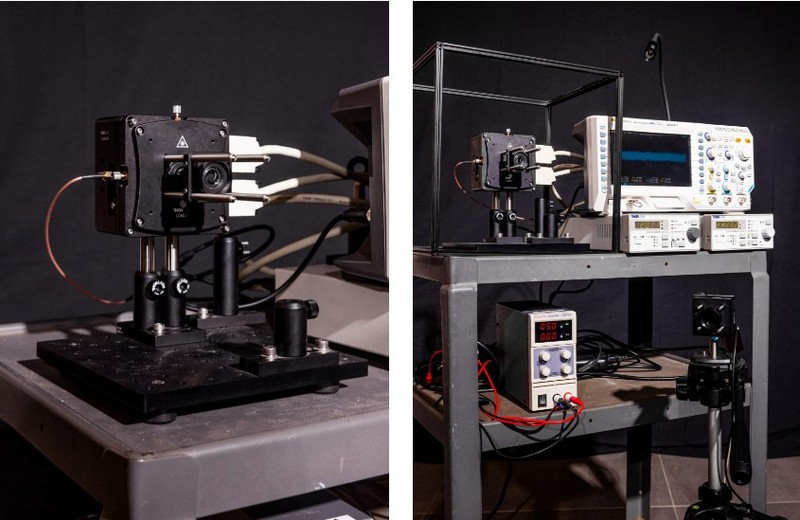It seems that hacker-spy technologies based on infrared lasers for reading information typed on a computer have become publicly available. At the Defcon security conference, famous hacker Samy Kamkar will demonstrate a setup that can accurately reconstruct text being typed or eavesdrop on a conversation based on vibrations reflected from a laptop. For the installation to operate, direct visibility of any reflective surface of the device is sufficient.

Image source: wired.com
Kamkar claims to have created one of the most high-precision laser microphone implementations in the world. The result is an open-source system that has the potential to capture virtually anything typed or spoken aloud in the subject’s room.
The keystroke tracking trick works best when pointing the laser at a highly reflective part of the laptop. “The Apple logo is almost a mirror,” says Kamkar. “It’s a really good reflective surface.” In some cases, the researcher was even able to pick up music, although the double glass window significantly impaired the intelligibility of the reflected signal.
Kamkar’s laser spy technology isn’t a completely new concept: both the keystroke monitoring method and audio eavesdropping are essentially versions of the laser microphone, invented decades ago. Kamkar’s merit lies in the significantly increased accuracy of the operation of such a device and the open source code of the system.
To reduce interference and noise in the reflected infrared signal, he used 400 kilohertz modulation with further filtering. The resulting signal was amplified and sent to an upconverter and then to a digital programmable radio for analysis. In other words, Kamkar converted sound into light and then back into sound.
«I think I’ve created the first laser microphone that actually modulates in the radio frequency domain,” says Kamkar. “Once I have a radio signal, I can treat it like a radio and I can use all the tools that exist for radio communication.”
In the keystroke detection process, Kamkar used iZotopeRX to further remove noise, followed by open-source software Keytap3, which converts the sound of keypresses into legible text. Security researchers have demonstrated for years that keystrokes can be analyzed and converted into text thanks to differences in the audio signature of each key. For example, relatively accurate text was obtained from keypress sounds recorded during a video call.
According to Wired’s journalists, Kamkar’s results were impressive – some of the recovered text samples were almost completely legible, with a letter missing every word or two. According to them, Kamkar’s laser microphone reproduced surprisingly clear sound, noticeably better than other similar samples in the public domain.

Kamkar admits he doesn’t know what such technology has achieved in commercial implementations available to governments or law enforcement agencies, let alone classified examples created or used by intelligence agencies. “I would assume they do this or something,” he says.
Unlike the creators of professional spy tools, Kamkar publishes complete diagrams of his DIY spy kit with a laser microphone. “Ideally, I want the public to know everything the intelligence agencies are doing and what’s coming next,” Kamkar says. “If you don’t know something is possible, you probably can’t protect against it.”

Image source: Roger Kisby/Wired
How can you protect yourself from silent, invisible, long-range laser espionage? Companies and individuals concerned about their safety are advised to install laminated or reflective glass. There are devices that attach to window glass and cause it to vibrate, interfering with the laser microphone.
Kamkar has not tested his system against such devices, but offers a much cheaper solution: “Don’t work on computers that are visible from a window. Or just don’t wash your windows.”